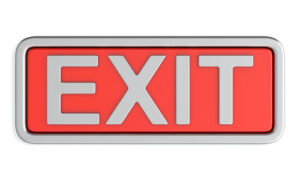 John was excited as “today is the day!” Twenty-five years ago this month he had started his home remodeling business with a truck and a tool belt, and today at 3pm he was going to the deal table to sell his business to a much larger remodeling company. It would be a strategic purchase for the buyer who was willing to pay a premium with a goal of expansion in the region. With the check received today, John knew he could now do everything he and Kim had thought about doing for years — travel, more time with the family and for hobby’s and other interests they both enjoyed.
John was excited as “today is the day!” Twenty-five years ago this month he had started his home remodeling business with a truck and a tool belt, and today at 3pm he was going to the deal table to sell his business to a much larger remodeling company. It would be a strategic purchase for the buyer who was willing to pay a premium with a goal of expansion in the region. With the check received today, John knew he could now do everything he and Kim had thought about doing for years — travel, more time with the family and for hobby’s and other interests they both enjoyed.
The amount received actually exceeded John’s “number”, and hence, he and Kim spontaneously pulled together a celebration dinner with family and a few close friends at their favorite restaurant. John had done a great job through the years building a “saleable business” focusing on a strong management team, strong financial performance, a plan for growth, up-to-date systems and processes and other value drivers which and now he was reaping the rewards. There was indeed much to celebrate!
Fast forward, six months later: John has come to realize that his number needed to be quite a bit larger than what he had originally calculated. In whatever way he had performed his calculations, he failed to consider to the extent needed, or at all, the following important factors in the equation:
• Of the $10 million in proceeds, he was going to net approximately $6 million after these charges/expenses:
o Transaction and professional fees.
o An asset sale was negotiated and there was income tax on some asset depreciation recapture.
o $1 million in business debt needed to be repaid.
o Capital gains and affordable care act taxes.
o Miscellaneous expenses including “stay bonuses” for two key employees.
John was in a small percentage of small business owners who have built a saleable business and actually sold it for their “number”. For that, he is to be commended and congratulated. At the same time, John was now experiencing much regret and was actually concerned about his financial ability to do everything he and Kim had planned on. What could have John done differently when planning for this most significant event? Worked with his exit, financial, transaction, and tax advisors well in advance of the sale in calculating the real number… net sale proceeds…and whether or not he and Kim could do all they wanted with that number.
Pat Ennis is the President of ENNIS Legacy Partners. The mission of ELP is to help business owners build value and exit on their own terms and conditions.
 Inflationary stimulus (including $6 trillion of ”quantitative easing”) in the US, combined with over-dependency on Russian gas supply in Europe and falling industrial production from COVID lockdowns in China have created the proverbial slow-motion car wreck for the world economy. All three will come home to roost for the world’s major markets in 2023.
Inflationary stimulus (including $6 trillion of ”quantitative easing”) in the US, combined with over-dependency on Russian gas supply in Europe and falling industrial production from COVID lockdowns in China have created the proverbial slow-motion car wreck for the world economy. All three will come home to roost for the world’s major markets in 2023.



